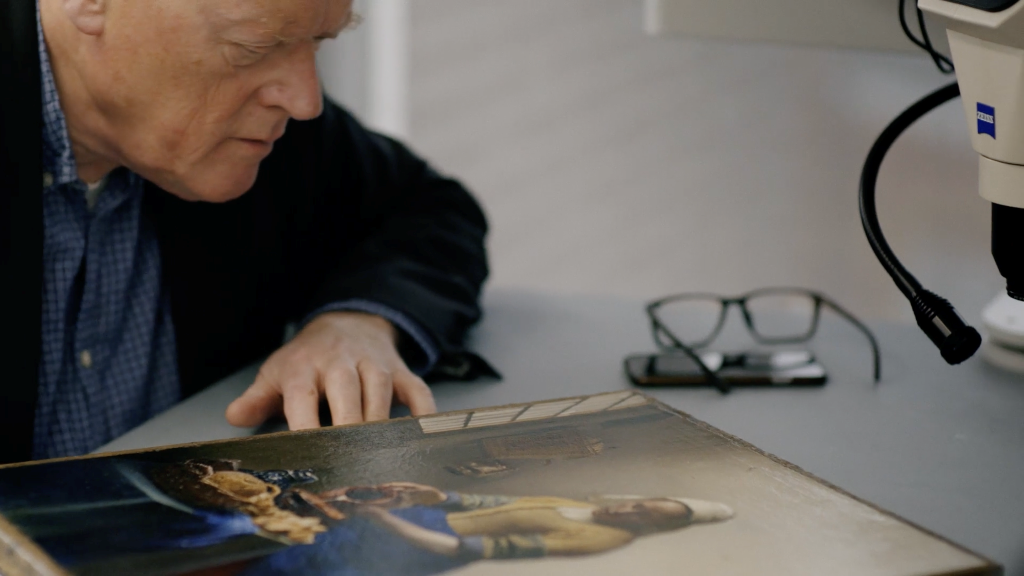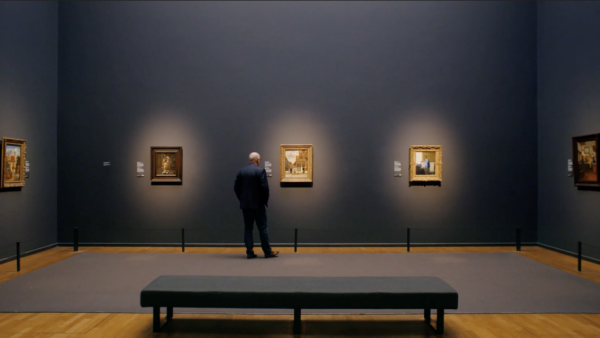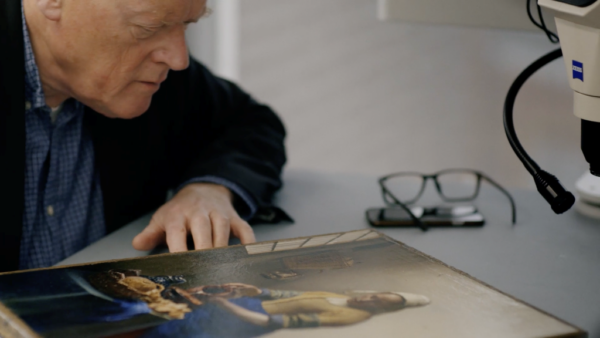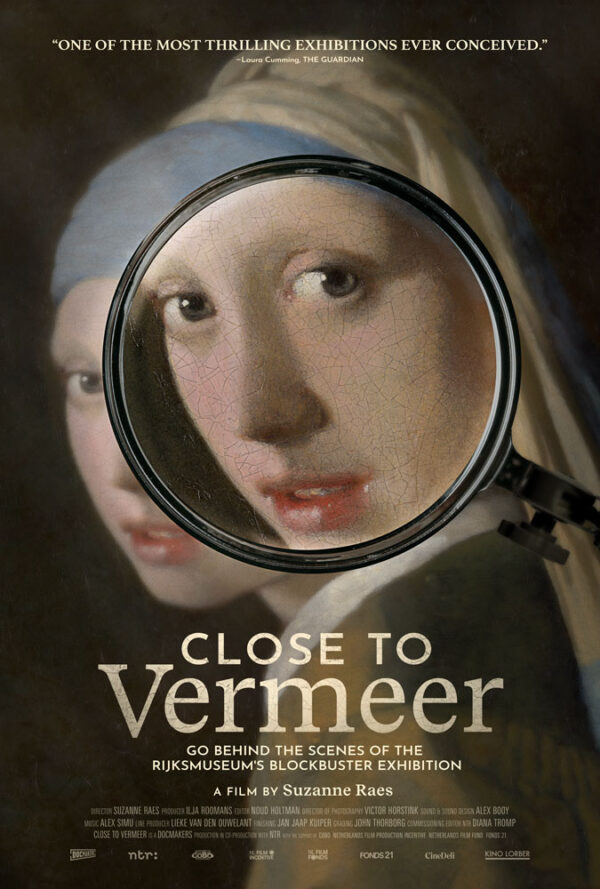


NR | 1h 18min | Documentary, History, Art | 26 May 2023 (Netherlands)
Other than possibly Rembrandt, none of the painters to produce art during the 17th-century Dutch Golden Age is as well-respected and revered by experts and collectors as Johannes Vermeer.
Depending on the source, Vermeer created just 40 works between 1654 and 1670. Of those, six are presumed lost or destroyed, and at least one is, again depending on the source, incorrectly attributed.
Director Suzanne Raes devotes roughly a third of the running time of the new documentary “Close to Vermeer” to a debate regarding the authenticity of a single painting: “Girl With a Flute.”
This often contentious debate between U.S. and Dutch curators is the last in a series of meetings leading up to the main event: a 2023 Vermeer exhibit taking place at the Rijksmuseum in Amsterdam. This exhibit (in theory) is historic as it will feature the highest number of Vermeer works ever under one roof. The trick is in convincing two galleries in the United States and another in Germany to lend a total of 10 works to the exhibition.
Heading up the Dutch contingency is Dr. Gregor J.M. Weber, the art director at the Rijksmuseum, whose obsession with Vermeer began as a teen and has only grown more intense with the passage of time. With his imposing gait, shaved head, and black horn-rimmed glasses, Weber is a hybrid (both physically and in temperament) of Dr. Evil from the “Austin Powers” flicks, Gru from the “Despicable Me” franchise, and Col. Klink from the TV series “Hogan’s Heroes.”
Tenacious and driven, Weber is also somewhat lacking in people skills and the subtler points of art world finesse and deal-making. Regardless of his results, Weber’s presence in the film adds elements of unintended humor and a level of “personality” not generally associated with many often brittle and staid documentaries of this ilk.
Weber, however, performs a great service by demonstrating a device that has divided Vermeer devotees for centuries: Camera Obscura. With origins dating back to 500 B.C., the 17th-century obscuras were rectangular boxes with triangular tent-like tops and a front lens that projected images to a 45-degree mirror in the back. The mirror would then project captured images onto surfaces (canvases in particular) where artists could trace, or fill in the images with paint. Many contend this is the reason why Vermeer’s paintings bear an almost photographic, realistic look.
It’s never been proven with any certainty that Vermeer employed obscura, but in the 2013 film “Tim’s Vermeer,” inventor Tim Jenison spent four months, a great deal of money, tools only available in the 17th century, and obscura to reproduce an astonishingly accurate copy of Vermeer’s impossibly detailed “The Music Lesson.”
Another facet of the film that is both highly entertaining and informative is the time spent in the company of various technicians examining, via X-rays and microscopes, a handful of paintings that go far in debunking the obscura theory. These exercises also aid and, sometimes further confound, experts trying to determine attribution. A passage regarding the origin of a single bolt of canvas used in two different works is particularly illuminating.
The arguable highlights of the movie, at least from a human interest angle, are the sections featuring U.S. artist Jonathan Janson. Regarded by practically everyone as the foremost Vermeer expert, Janson brings welcomed emotional heft to the film. Especially moving are the instances where he sees some of the paintings in person for the first time.
Janson also discusses plans for a new book about the shameless merchandising of Vermeer and, in particular, “Girl with the Pearl Earring,” which he regards as crass and in bad taste.
The 2023 exhibition, which started in February and ends in June, sold out in near-record time. For those wanting to take a virtual tour, visit: https://www.rijksmuseum.nl/en/whats-on/exhibitions/vermeer.
The fascination and obsession with Vermeer show no signs of letting up.
Like far too many artists before and after him, he died young (43) while leaving his wife and 11 children penniless. Adding to the legend and mystique was Vermeer’s complete lack of keeping journals, letters, or diaries. Unlike Rembrandt, who made close to 80 self-portraits, Vermeer did only one that is confirmed, “The Allegory of Painting,” where he is only seen from behind.
Vermeer is and will forever remain an enigma and an anomaly to the art world. Whether by design or not, he left us with just the work, charging us to complete an impossible-to-solve portrait of the man.
The film is presented in Dutch and English with English subtitles.
“Close to Vermeer” opens on May 26 at the Quad Cinema in New York City with release nationally to follow.
‘Close to Vermeer’
Documentary
Director: Suzanne Raes
Running Time: 1 hour, 18 minutes
MPAA Rating: Not Rated
Release Date: May 26, 2023
Rating: 4 out of 5




